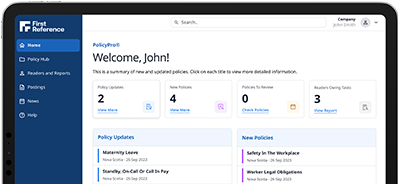
How AI is transforming hiring: Smarter, faster, and more inclusive recruitment
First Reference
The hiring landscape is evolving rapidly and AI in hiring is at the forefront of this transformation. From automating repetitive tasks to enhancing candidate screening, AI-powered hiring solutions are helping recruiters and HR teams streamline workflows, reduce bias, and improve hiring outcomes.
AI is reshaping recruitment, the tools leading the way, and the aspects which businesses need to know to stay competitive are the premise of this blog post.
What is AI in hiring?
AI in hiring refers to the application of artificial intelligence technologies such as machine learning, natural language processing (NLP), and predictive analytics to streamline and optimize recruitment processes. These technologies are integrated into AI recruitment tools that assist with:
- Resume screening
- Candidate sourcing
- Interview scheduling
- Skills assessments
- Predictive hiring analytics
By automating these steps, companies can reduce time-to-hire and make data-driven hiring decisions. AI is an integral part in hiring across the entire process.
Key Benefits of AI in Hiring
1. Faster Candidate Screening
AI-powered tools can scan thousands of resumes in seconds, identifying top candidates based on pre-defined criteria. This reduces manual screening and shortens hiring timelines. Choosing the right AI platform for this part is important as an incorrect tool can lead to missing top candidates who fit the bill.
2. Improved Quality of Hire
Machine learning algorithms analyze historical hiring data to predict which candidates are most likely to succeed in a role, improving the quality of hire. This is based on matching industries, time spent in each role, and soft skills.
3. Reduced Hiring Bias
When trained correctly, AI can help remove unconscious bias by focusing on skills, qualifications, and performance data, rather than demographic characteristics. It eliminates human bias and reduces the dependence on hiring more resources to cope with increased demands during peak seasons.
4. Enhanced Candidate Experience
Chatbots and virtual assistants can engage with candidates 24/7, answer questions, schedule interviews, and keep them updated, leading to a more positive recruitment experience.
5. Data-Driven Insights
AI enables real-time analytics on hiring funnels, candidate drop-off points, and diversity metrics, empowering HR teams to make smarter decisions. Tools allow companies or hiring managers to get detailed reports on the top skills, questions, interactive assignments, and more. This helps deliver a positive hiring experience for the candidate based on data.
Use Cases: How Companies Are Using AI in Talent Acquisition
Resume Screening at Scale
Enterprises like Unilever and Hilton have automated résumé parsing and initial assessments using AI, saving thousands of hours annually. This helps pick out candidates who have the minimum requirements such as work eligibility and location.
Predictive Hiring
Companies are using AI to predict candidate success and cultural fit, leading to better long-term retention. Predictive hiring is an emerging trend where companies leverage AI and data analytics to forecast a candidate’s likelihood of success and alignment with organizational culture before making a hiring decision.
Diversity Hiring Initiatives
Organizations use AI tools to anonymize applications and track DEI hiring goals more effectively. These technologies aim to reduce unconscious bias, promote fairness, and enhance the overall inclusivity of recruitment processes.
Challenges and Considerations
While the benefits are substantial, AI in recruitment comes with challenges:
- Bias in training data: AI is only as unbiased as the data it learns from.
- Lack of transparency: Candidates may feel uneasy about being evaluated by algorithms.
- Regulatory concerns: Compliance with laws like GDPR or EEOC guidelines is crucial when deploying AI.
To mitigate risks, companies should prioritize ethical AI practices, invest in explainable AI models, and involve humans in final hiring decisions.
Future of Hiring with AI
The future of hiring is human-AI collaboration. Rather than replacing recruiters, AI will empower them to focus on strategy, relationship-building, and long-term talent development.
Emerging trends include:
- AI-powered video interviews with real-time sentiment analysis
- Personalized onboarding driven by AI insights
- Skills-based hiring models powered by talent intelligence
AI-powered HR is also making waves in compliance. Users can get immediate answers to HR/payroll questions across Canada. For HR teams, staying compliant is not an option. Choosing the right platform for compliance is important. To understand the impact employment and payroll related laws have on HR/Payroll practices and policies, it is essential to pick the right tools.
HRA is an AI-powered HR tool that allows organizations to get clarifications or responses to make informed decisions. AI is increasingly used in HR compliance to:
- Monitor regulatory changes in real time.
- Automate policy creation and updates.
- Detect risks in employment practices (e.g., discrimination, payroll misclassifications).
- Streamline audits and document tracking.
- Support DEI and workplace investigations with unbiased data analysis.
Final Thoughts
AI in hiring is not a passing trend, it’s a powerful shift that is redefining how companies attract, assess, and hire top talent. By embracing AI recruitment tools and staying informed about best practices, businesses can gain a competitive edge in today’s fast-paced job market.
If you’re ready to modernize your recruitment strategy, now is the time to explore the potential of AI in your hiring process.
Table of Contents
Compliance Made Easy®

